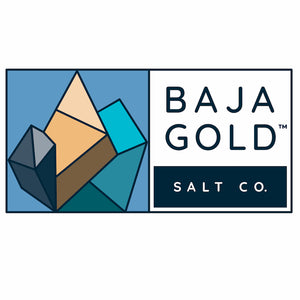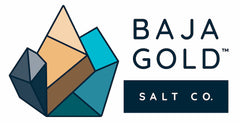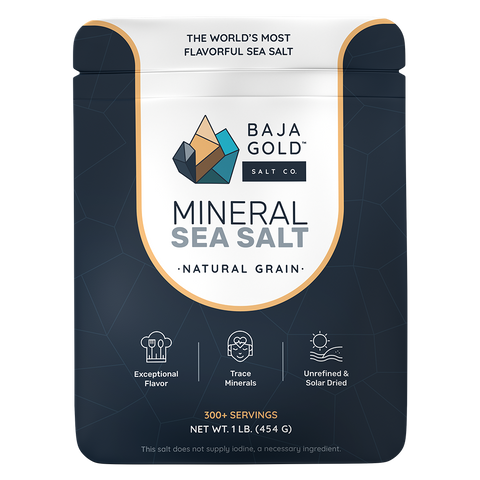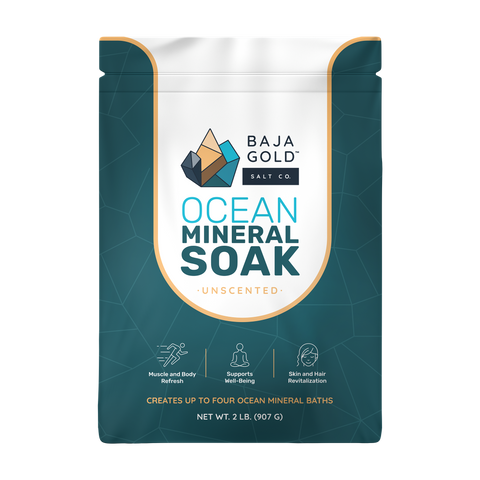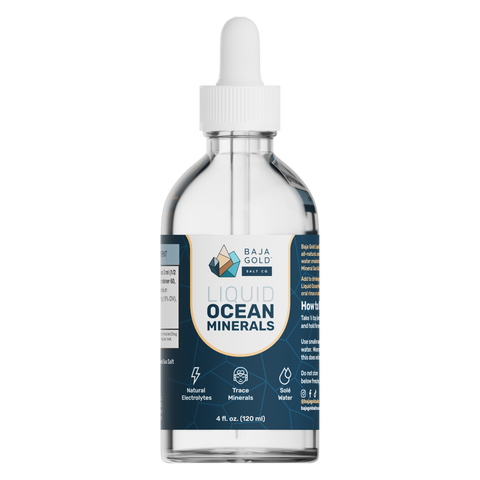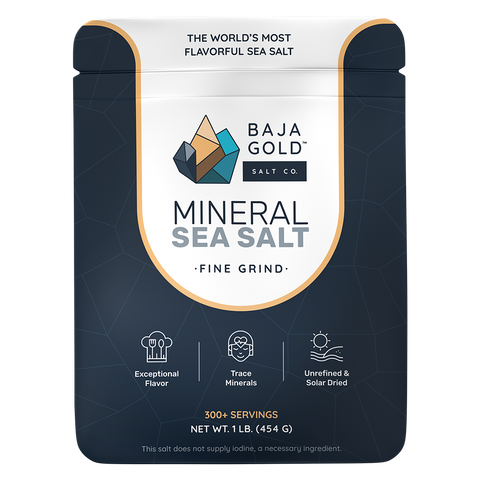Himalayan Salt vs Sea Salt

Salt plays a bigger role than most people realize. It helps regulate hydration, supports nerve function, and keeps your body’s fluid balance in check. The growing interest in natural salts has brought two names to the forefront: Himalayan salt and sea salt.
Both carry unique mineral profiles, sourcing methods, and nutritional differences that can influence your health and how your food tastes. While pink crystals from the Himalayan Mountains may look impressive, many health-conscious cooks are turning to mineral-rich sea salt, especially varieties that are unrefined, sustainably harvested, and packed with trace minerals your body actually uses.
Choosing the right salt isn’t only a matter of taste, it’s a smart step toward cleaner eating and healthier living.
What’s What?
Himalayan Salt
Himalayan salt, sometimes called pink Himalayan salt or Himalayan pink salt, is a type of rock salt. It’s mined from ancient salt beds deep within the Himalayan Mountains, most notably in the Khewra Salt Mine in Pakistan. Its distinctive pink hue comes from its elevated iron content, and it often appears in coarse crystals or blocks.
Sea Salt
Sea salt is created by evaporating seawater. It can be harvested from oceans and seas around the world. The source of the seawater and how the salt is harvested and processed can influence its flavor, mineral content, and texture. At Baja Gold Salt Co., we produce unrefined salt using a natural, solar-evaporation process that preserves the salt’s natural trace minerals.
While both are considered more natural alternatives to regular table salt, they are quite different in origin and composition. And for many, the choice comes down to personal preference, culinary uses, and a desire for less sodium and more minerals in their diet.
How These Salts Are Sourced
Himalayan Salt
Himalayan salt is harvested from deep underground. It formed millions of years ago when ocean water evaporated, leaving salt behind in mineral-rich deposits. Today, miners extract large blocks of this rock salt using a variety of tools and methods, often including heavy machinery and / or mining explosives. The salt is then rinsed to remove dust and broken into smaller pieces before being packaged for sale.
Unrefined Sea Salt
Unrefined sea salt, including Baja Gold Mineral Sea Salt, comes from a renewable marine source. Our salt is naturally harvested from the Sea of Cortez, an area known for its high mineral content and clean waters. We use solar evaporation to draw out the salt and retain its full spectrum of trace elements, without refining or chemical intervention. This creation method protects the salt’s flavor, structure, and nutritional value.

Mineral Content: Side-by-Side Comparison
One of the biggest differences between these salts is what’s in them—especially when it comes to essential minerals and trace minerals that support hydration, nerve function, and fluid balance.
Himalayan Salt
- Still composed primarily of sodium chloride
- Naturally includes macro minerals and trace minerals at a lower rate than unrefined sea salts
- Absorbs an imbalanced amount of iron oxide over time, which gives it its pink color
- Often used as a finishing salt or decorative pink salt
Unrefined Sea Salt (Baja Gold)
- Naturally lower Sodium Chloride content (75 - 80%) by volume due to larger crystals
- Unprocessed and unrefined, preserving natural mineral contents
- Includes natural minerals and trace elements, like magnesium, potassium, calcium, and more
- Perfect for cooking, baking, hydration, and other typical table salt uses
Both salts offer more nutrients than table salt, which is heavily refined and stripped of minerals. But Baja Gold’s sea salt maintains a higher mineral content thanks to its gentle, natural processing and the mineral-rich waters of the Sea of Cortez.
So, Which Salt Should You Choose?
If you're reaching for salt daily, it makes sense to choose one that does more for your body.
Mineral-rich sea salt delivers the full spectrum of trace minerals and essential nutrients your body needs to help support hydration, nerve function, and overall wellness. It's naturally harvested, unrefined, and contains less sodium by volume than heavily processed salts—making it a preferred option for daily use.
While Himalayan pink salt is visually appealing and contains some beneficial minerals, it's a non-renewable rock salt that's mined and shipped across the globe. Sea salt, especially when sustainably sourced from clean waters, offers a more environmentally friendly and nutritionally robust alternative.
If you're still using regular table salt, you're likely missing out on the natural minerals your body was designed to process. Highly refined and stripped of its nutritional value, table salt is made for shelf life—not health.
For flavor, function, and naturally occurring minerals, Baja Gold Sea Salt is the clear choice - unrefined and harvested using traditional methods that preserve its mineral content.
This blog is for educational purposes only and is not intended as medical advice. Please consult a healthcare provider if you have specific dietary concerns.
